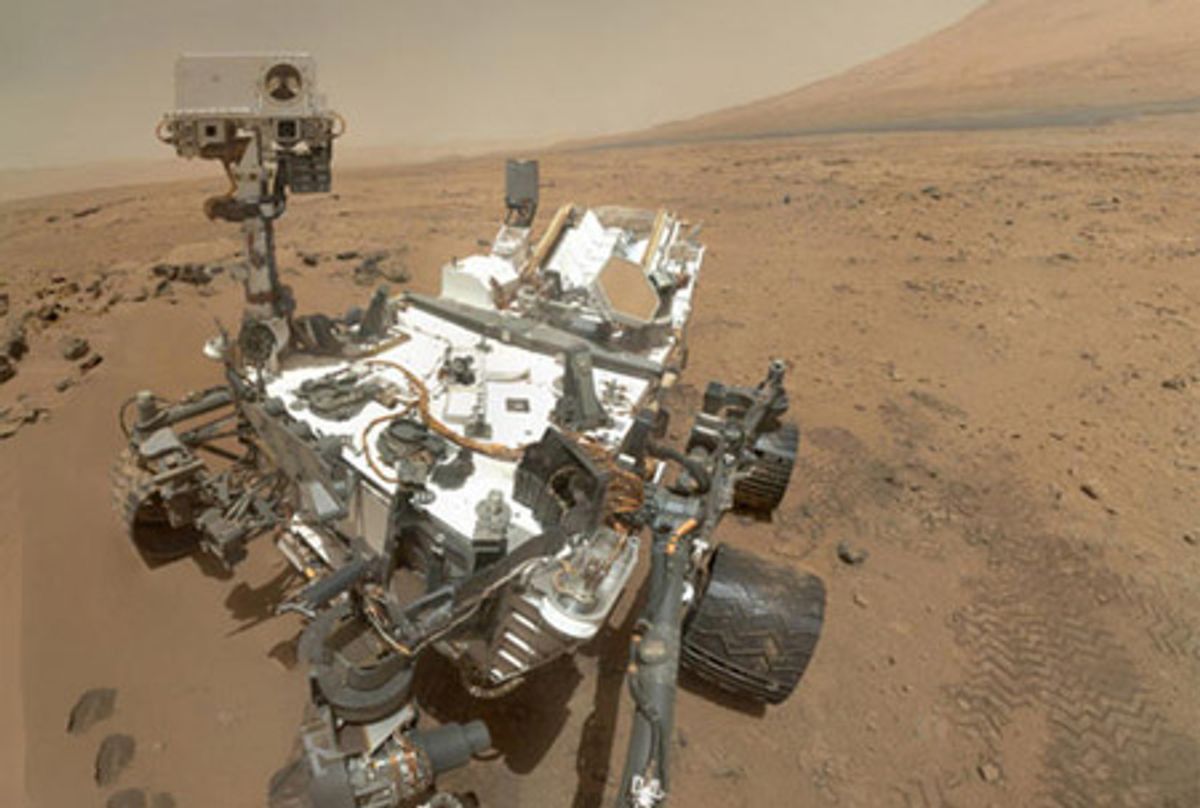It's been just four months since Curiosity landed on Mars, and NASA is already planning for her successor. At a press conference held in conjunction with the American Geophysical Union annual meeting in San Francisco yesterday, the agency officially announced its intention to land a next-generation version of the rover on Mars in 2020.
Even though it hasn't found Martians yet, I'm personally prepared to declare Curiosity a success based (if nothing else) on the fact that it managed to land itself in one piece and all of its instruments are fully functional. NASA has much stricter criteria for success, of course, but part of what gives this robot so much potential to do amazing things is that very smart people spent a very long time carefully planning out how all of her little bits would function. And that means a really, really long lead time.
The as-yet unnamed 2020 NASA rover would be based heavily on Curiosity, largely because as insane as that skycrane landing system was, it worked flawlessly. Plus, Curiosity is essentially a nuclear-powered science box on wheels, and you don't need to change that fundamental design to upgrade what's going on inside the science box. And as for just what exactly will be going on inside that science box, NASA has this to say: "the specific payload and science instruments for the 2020 mission will be openly competed, following the Science Mission Directorate's established processes for instrument selection." NASA is allocating $1.5 billion to pay for all of this, which is about $1 billion less than was spent on the Mars Science Laboratory mission as a whole.
2020 isn't that far off, but we (the human race) will likely have another new rover on Mars by 2018, courtesy of the European Space Agency and Roscosmos. It's planning a series of missions to Mars including a static lander in 2016 followed by an impressive looking rover two years later, called the ExoMars rover:
At 200 kilos, ExoMars will be a little bit bigger than Spirit and Opportunity but significantly smaller than Curiosity. It'll be solar powered, and the most interesting feature is probably that thing you can see on the front, which is a core drill that can retrieve soil samples from up to two meters beneath the surface, which is where all those happy little microbes might be hiding out. The ExoMars rover mission will last at least six months, and look for it to be sent on its way in 2018.
Via [ NASA ]
Evan Ackerman is a senior editor at IEEE Spectrum. Since 2007, he has written over 6,000 articles on robotics and technology. He has a degree in Martian geology and is excellent at playing bagpipes.





